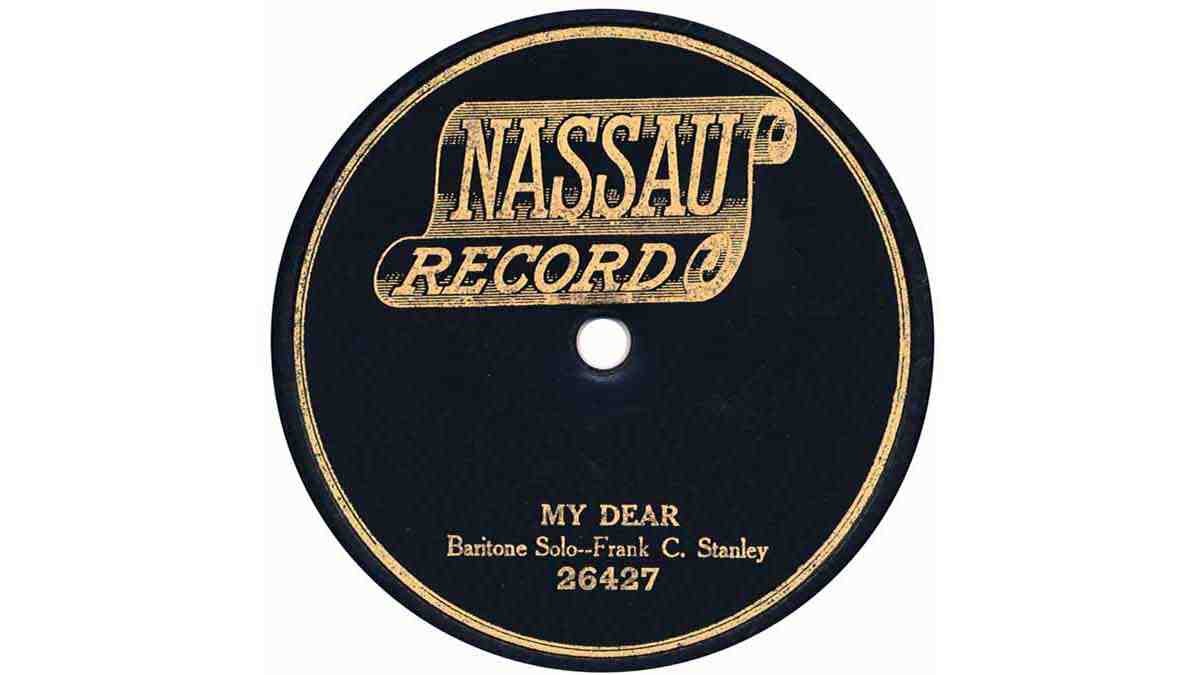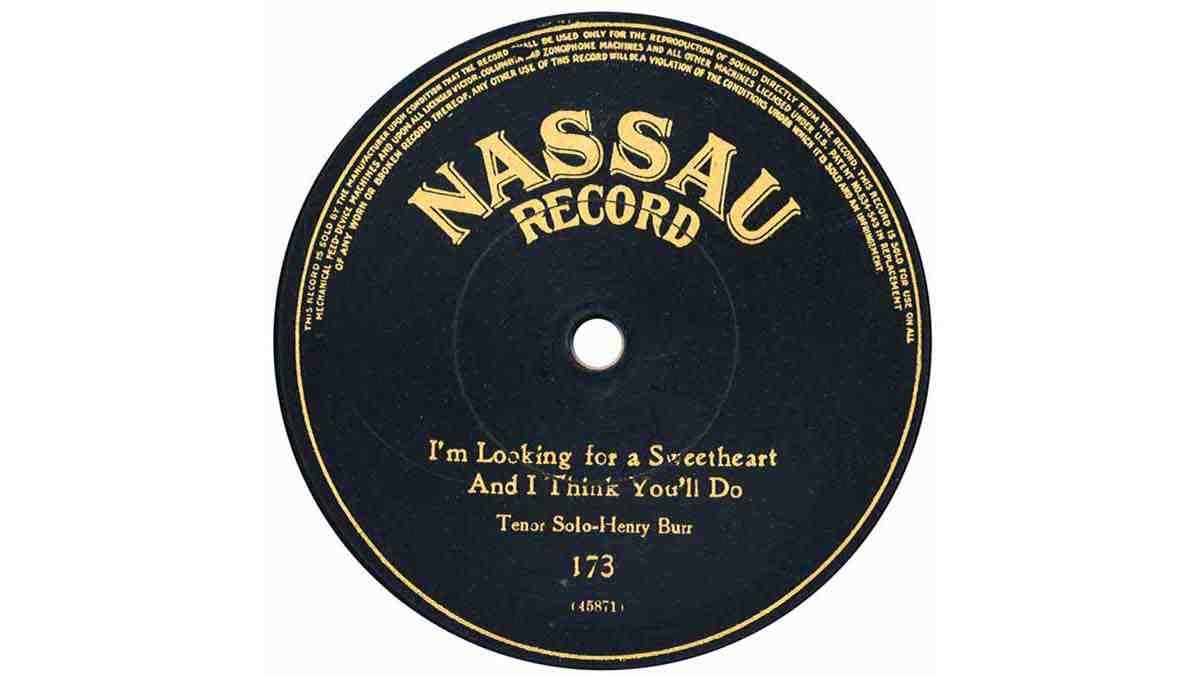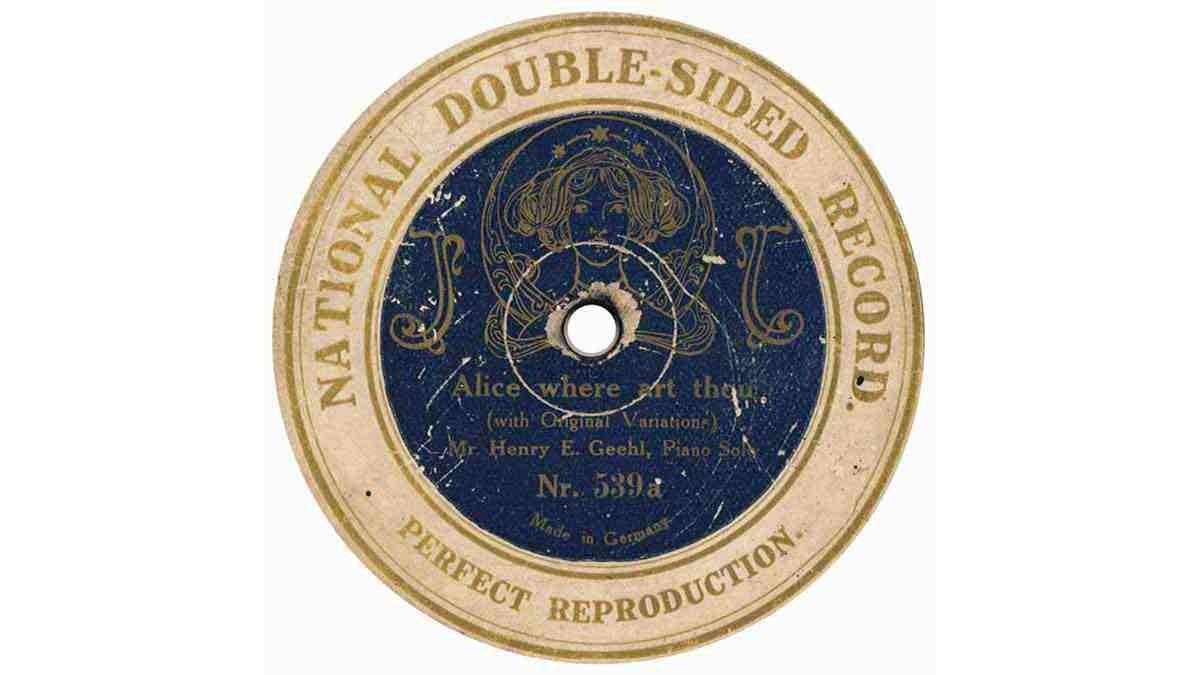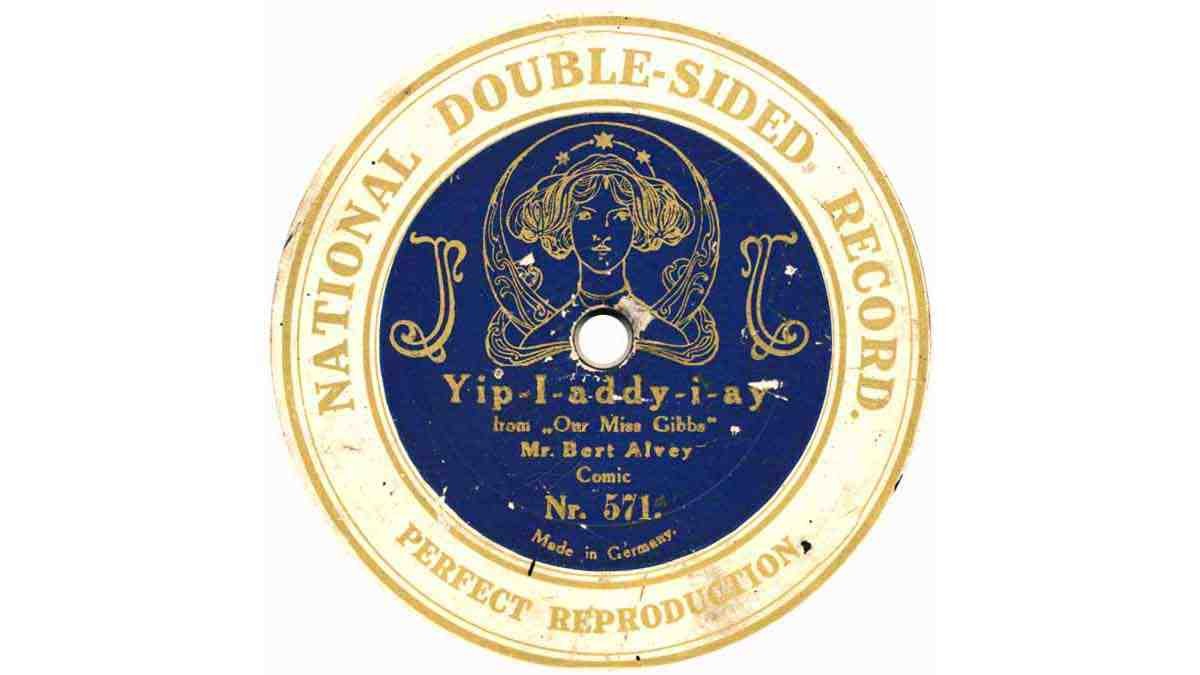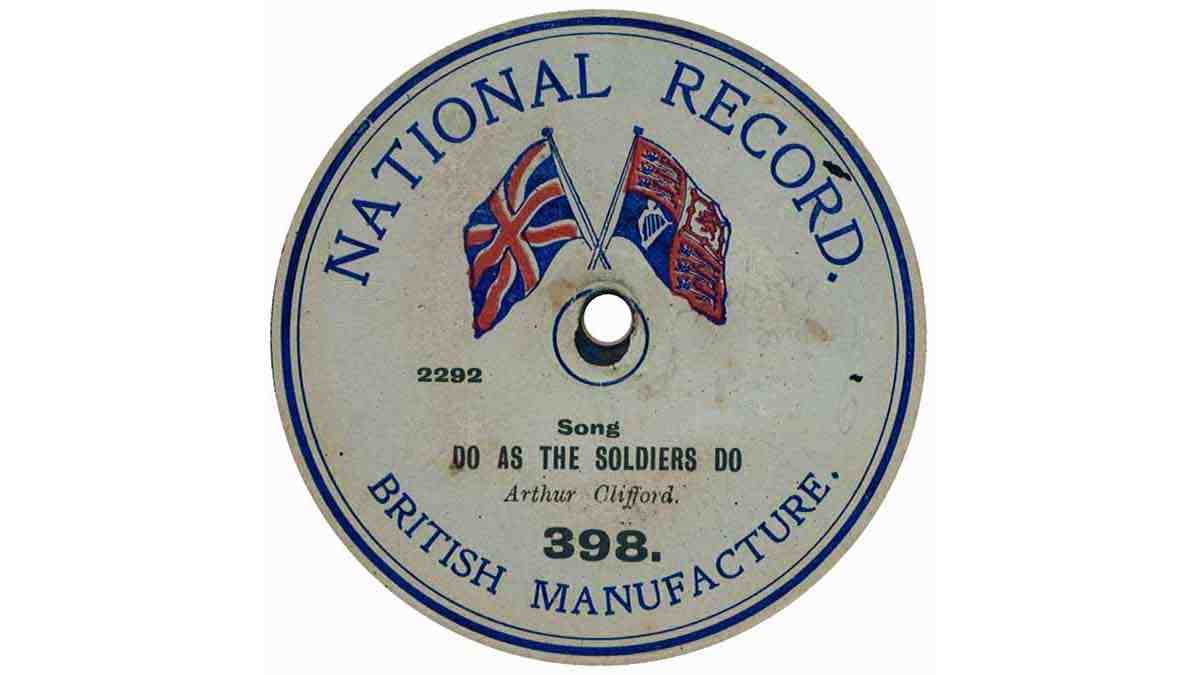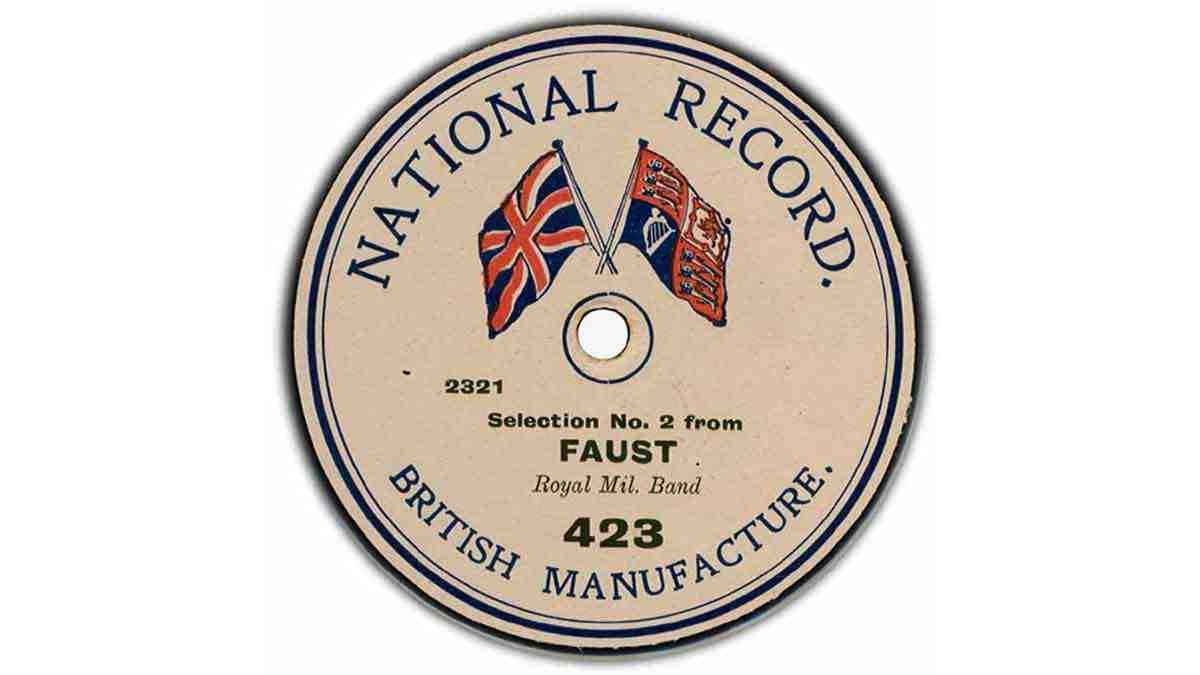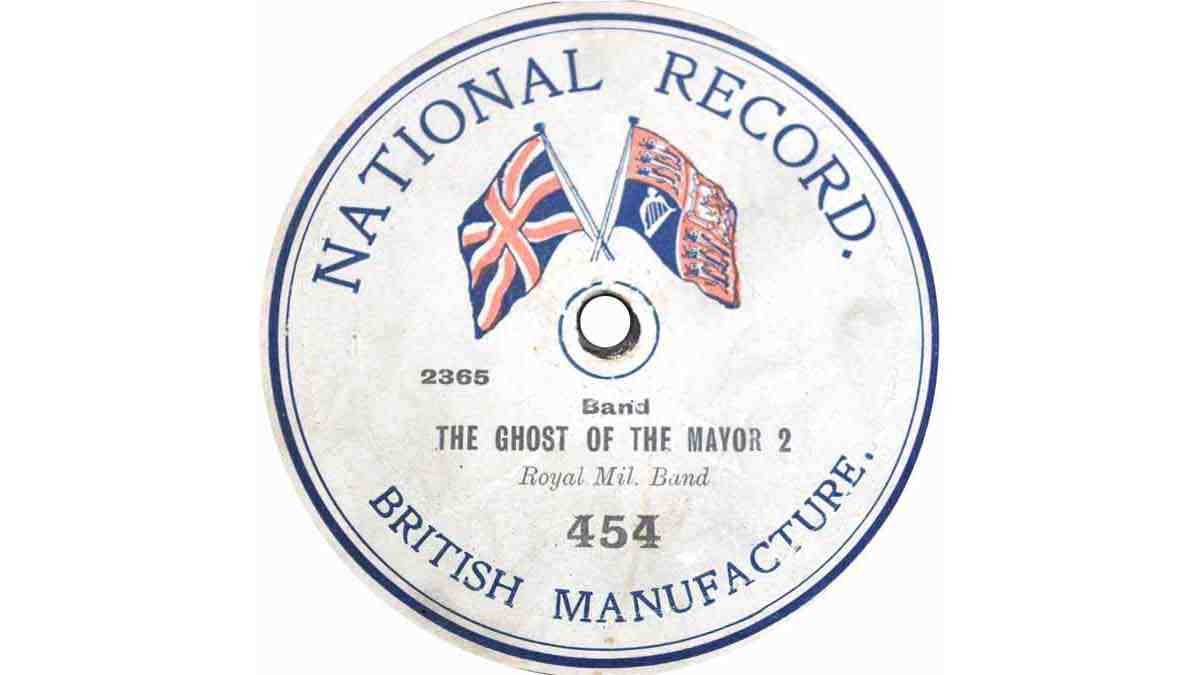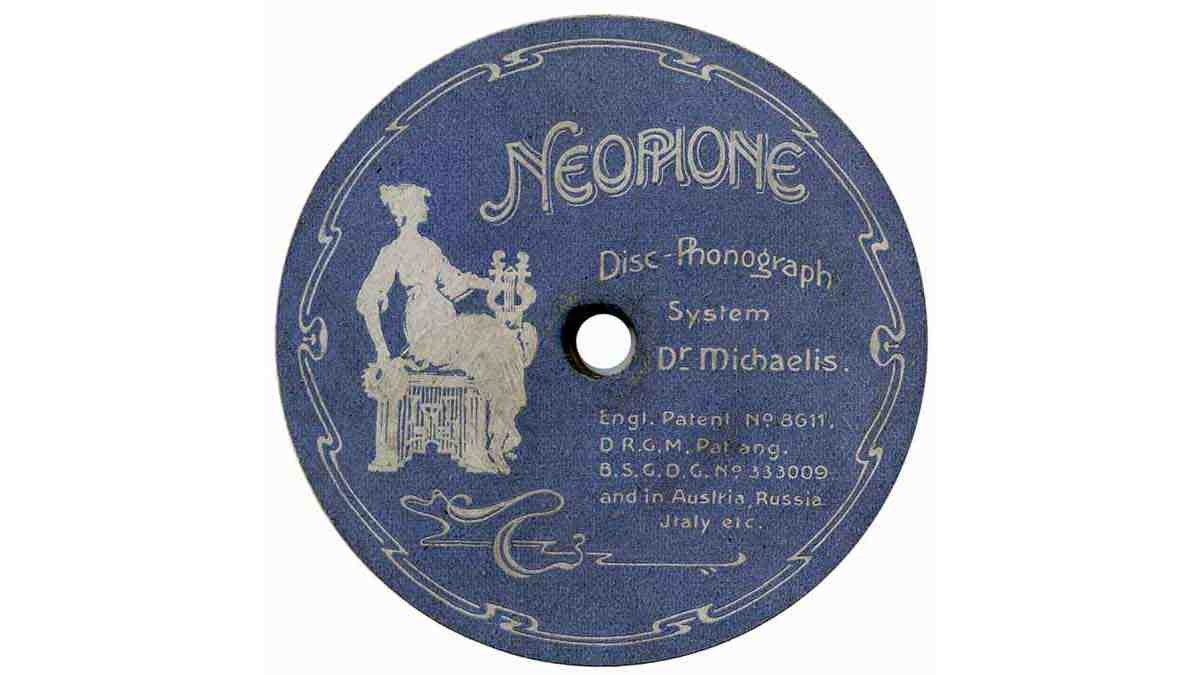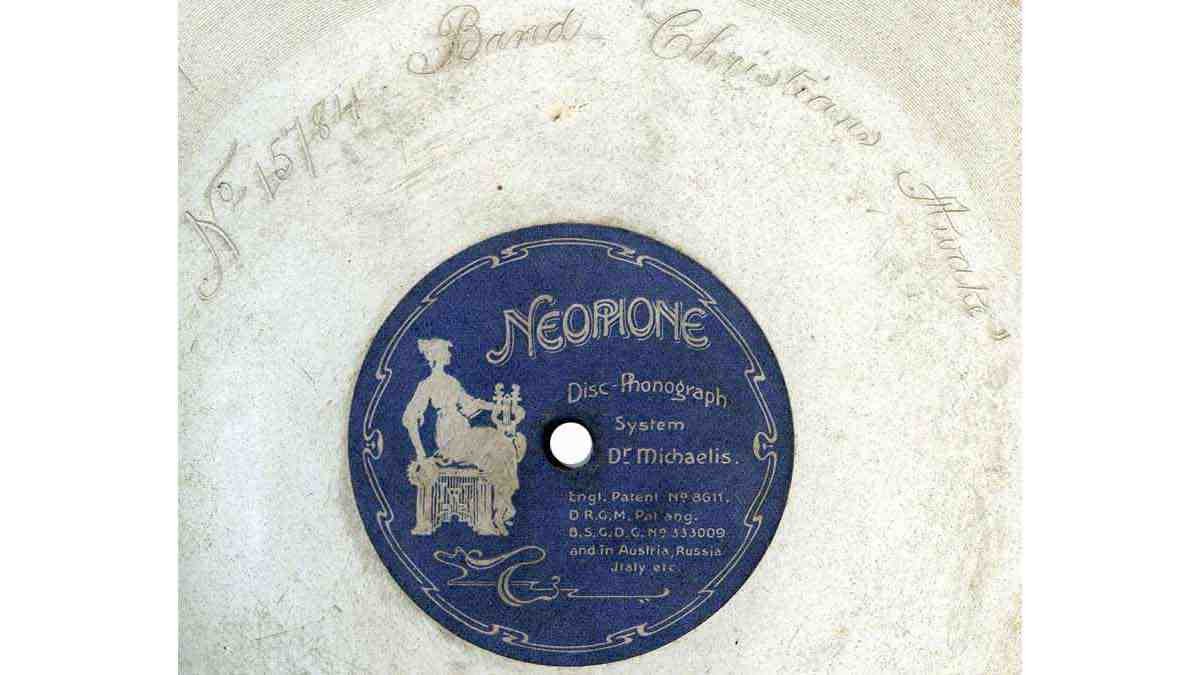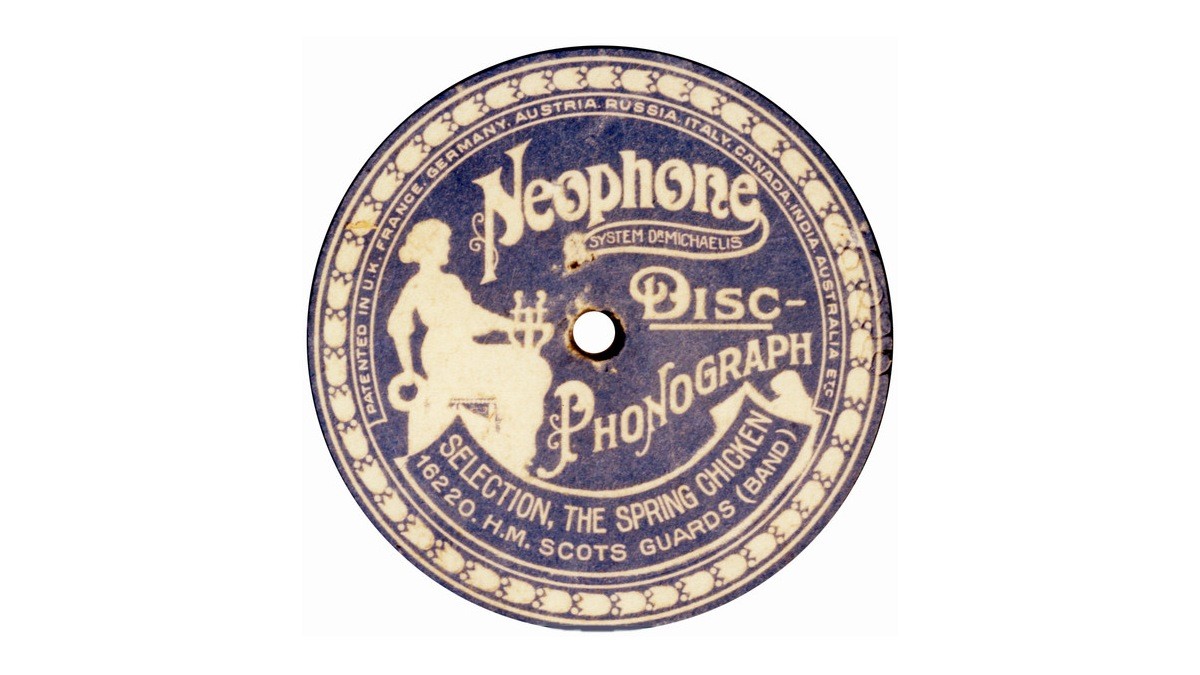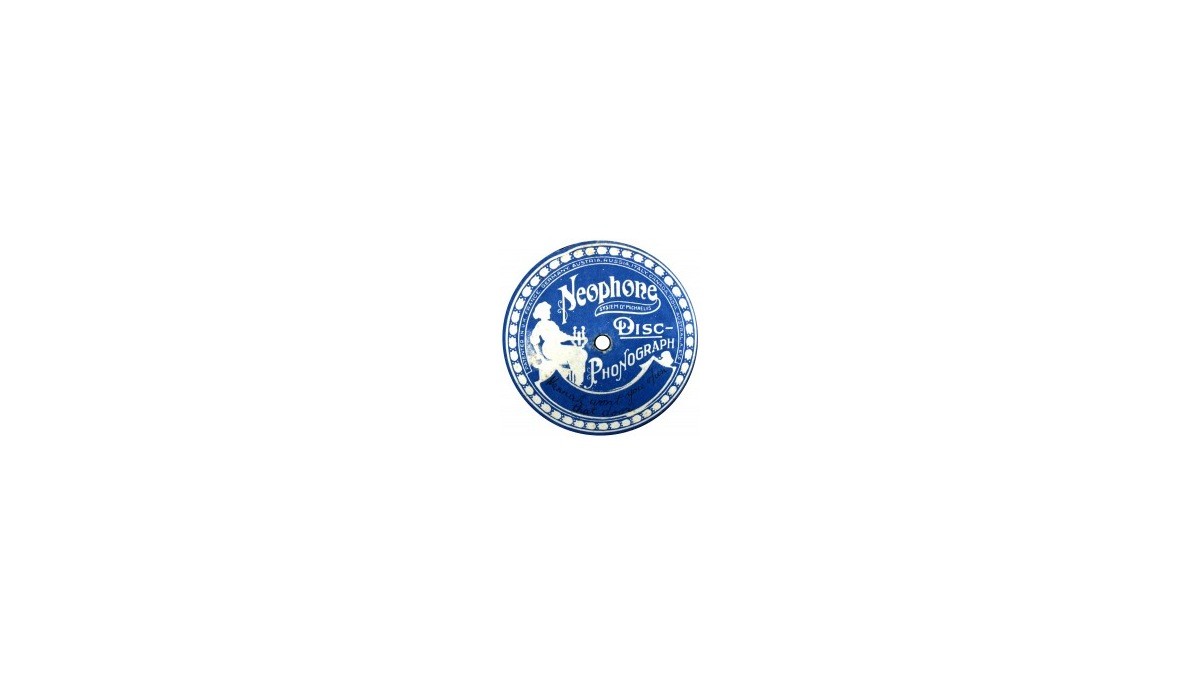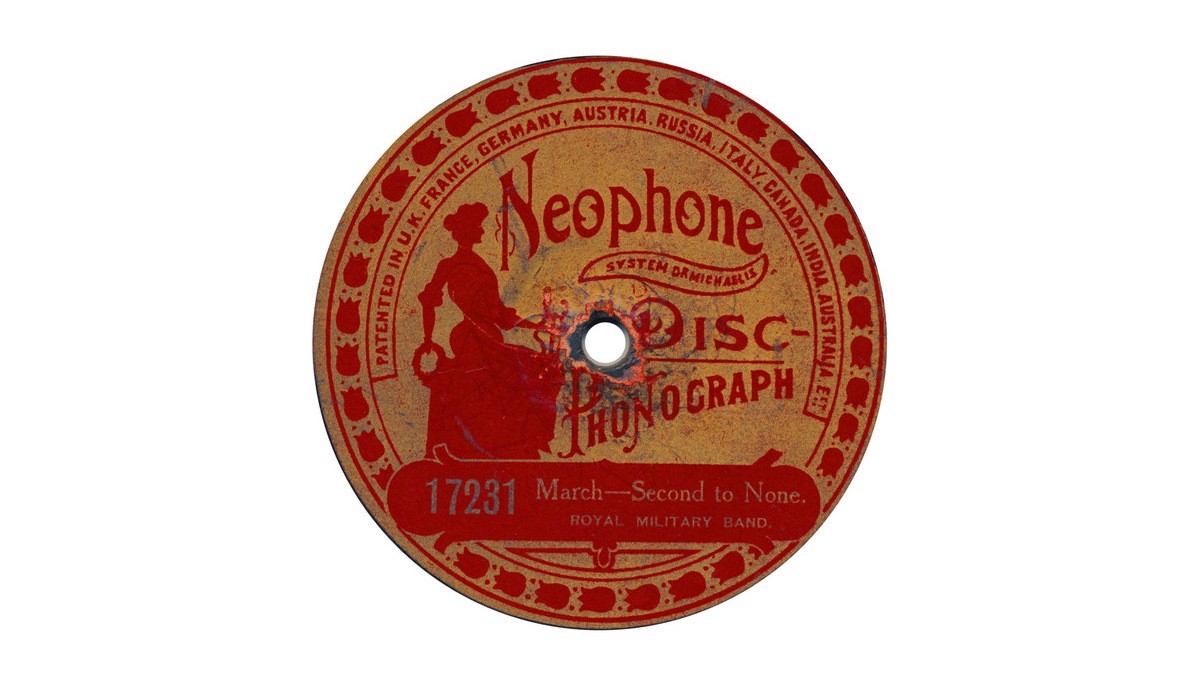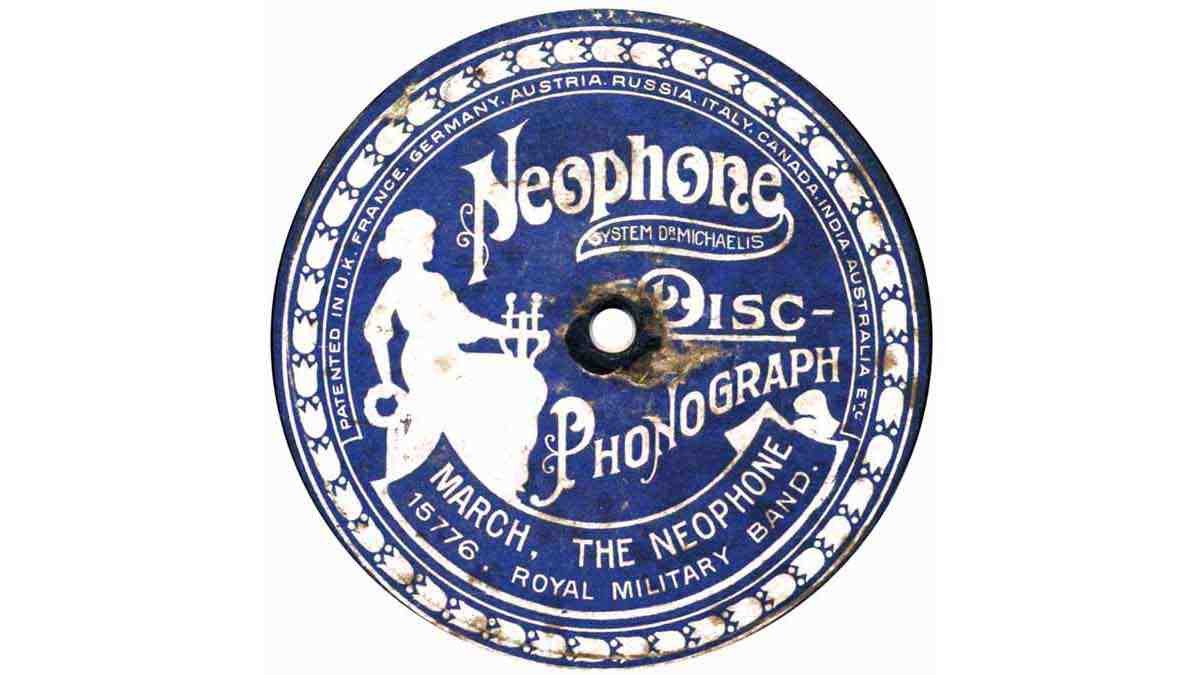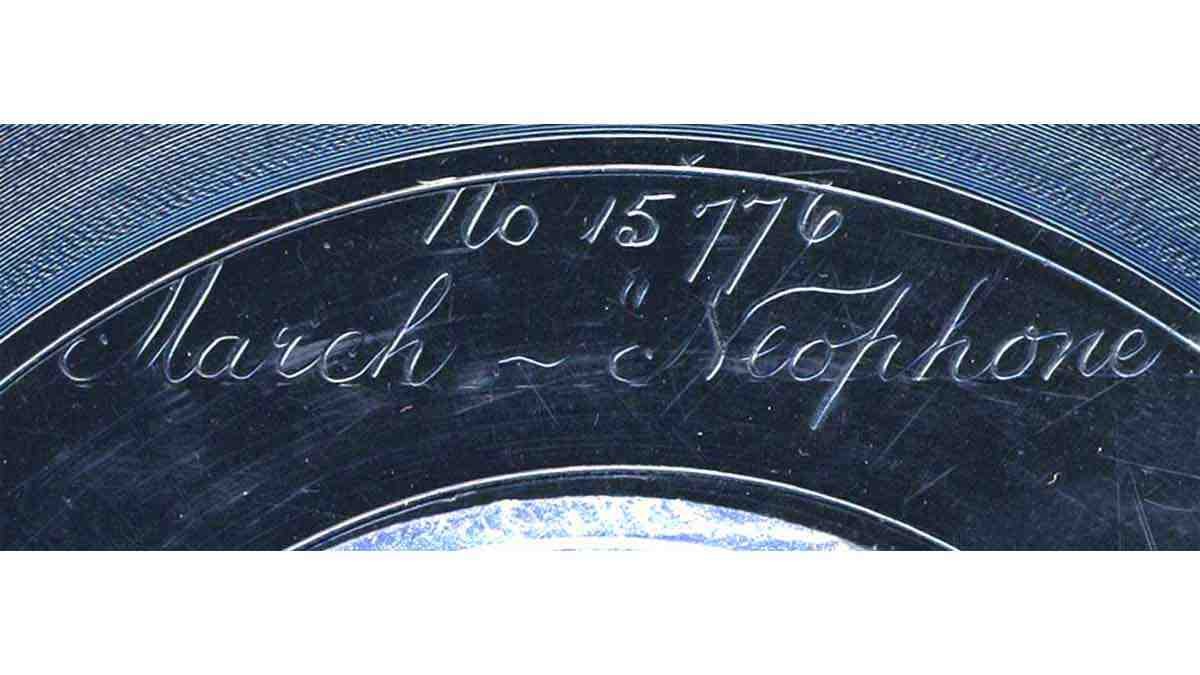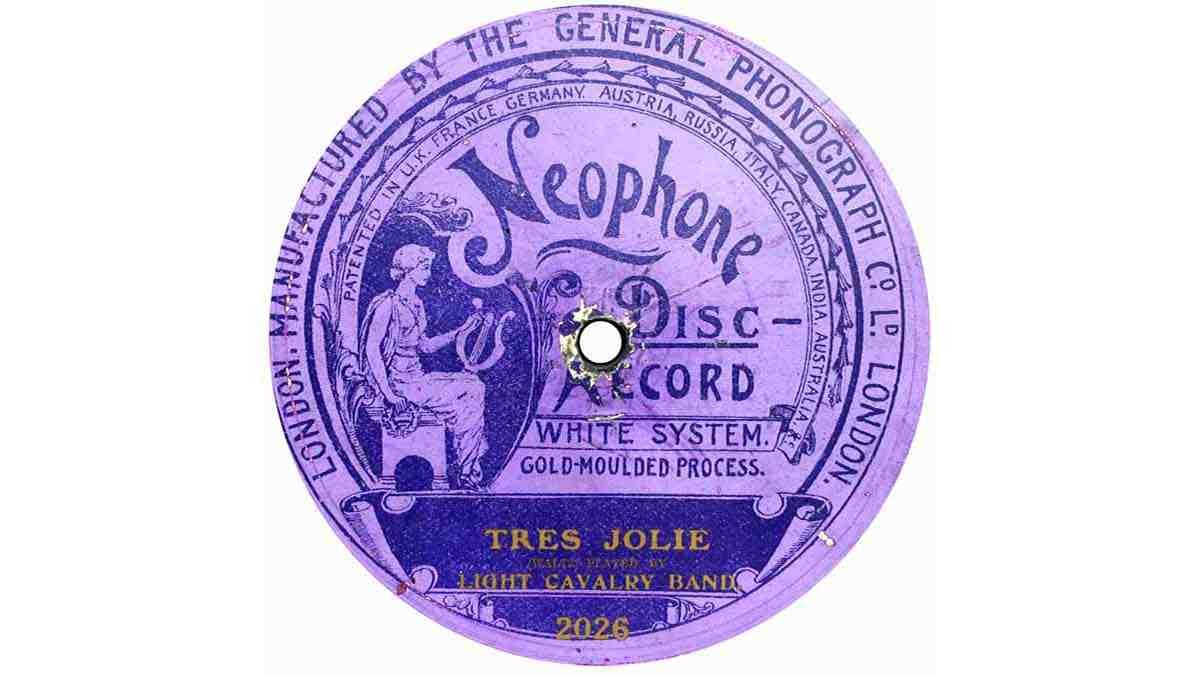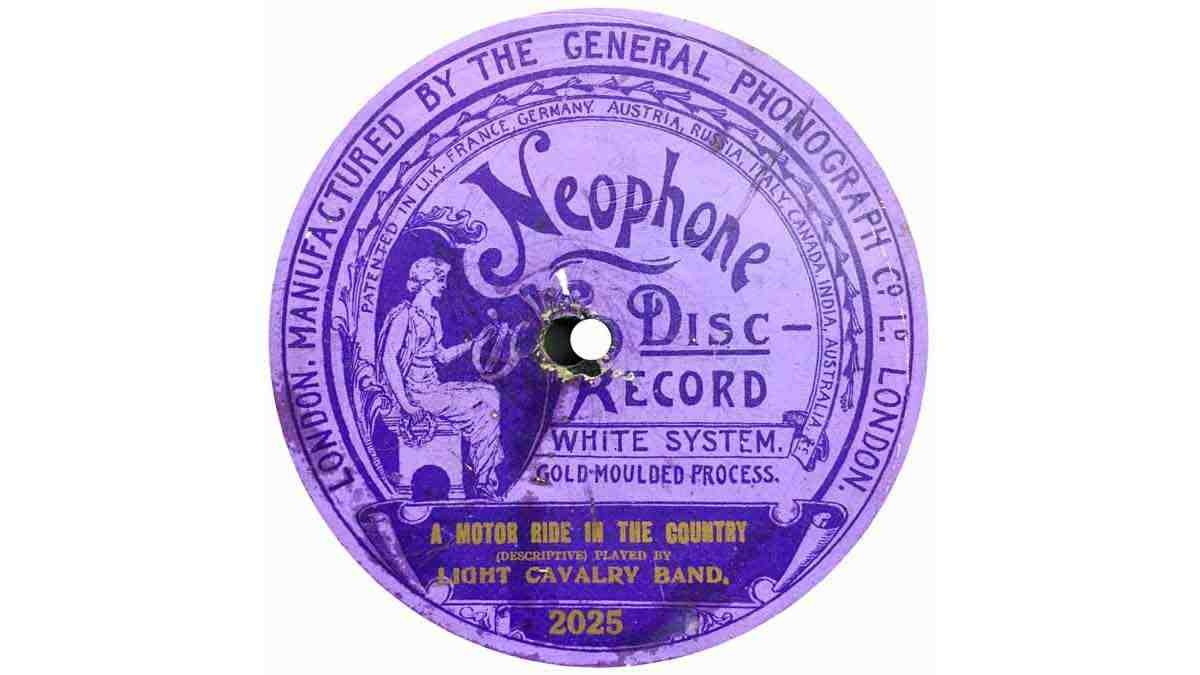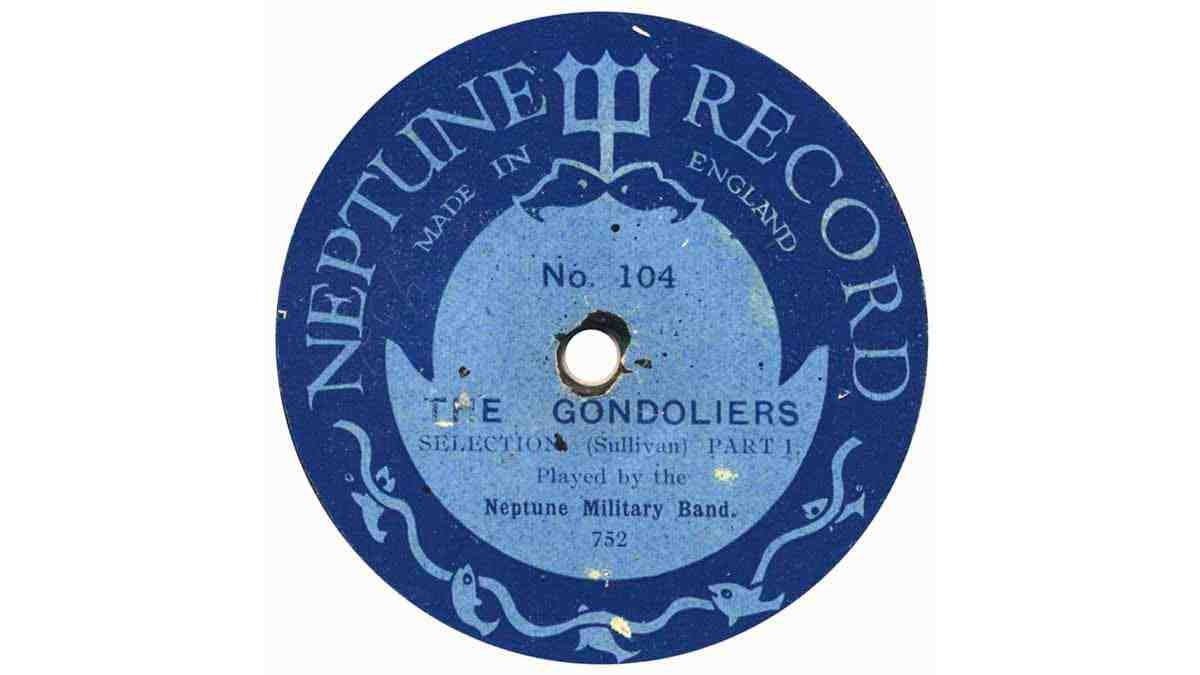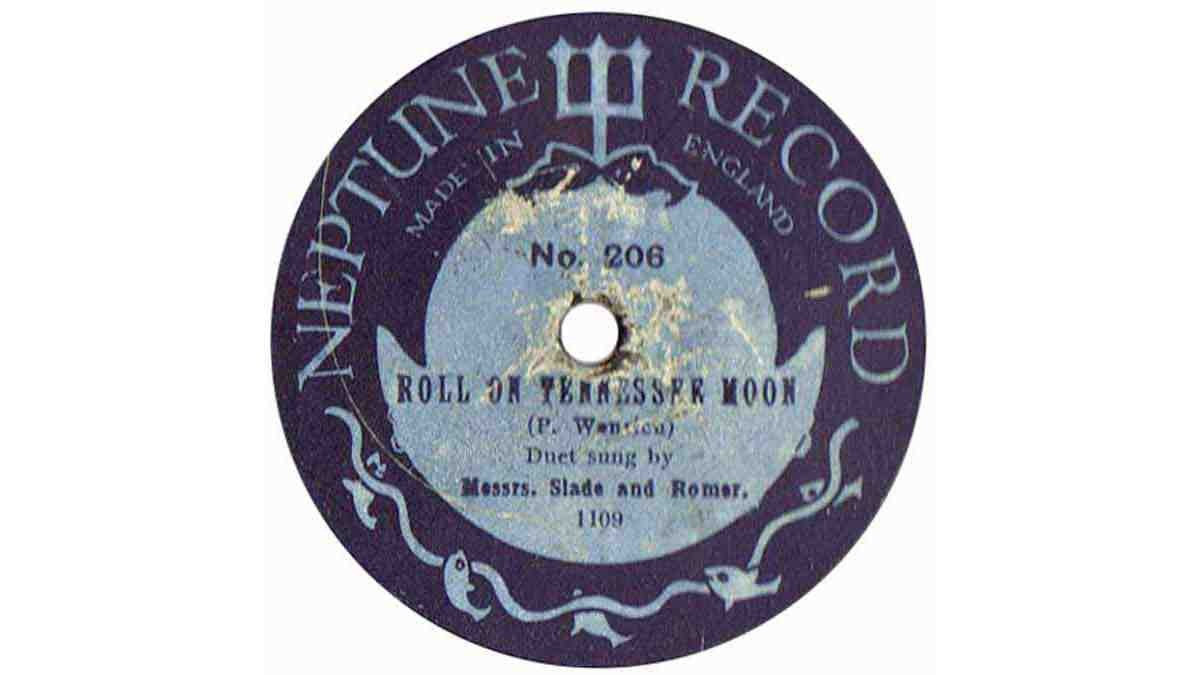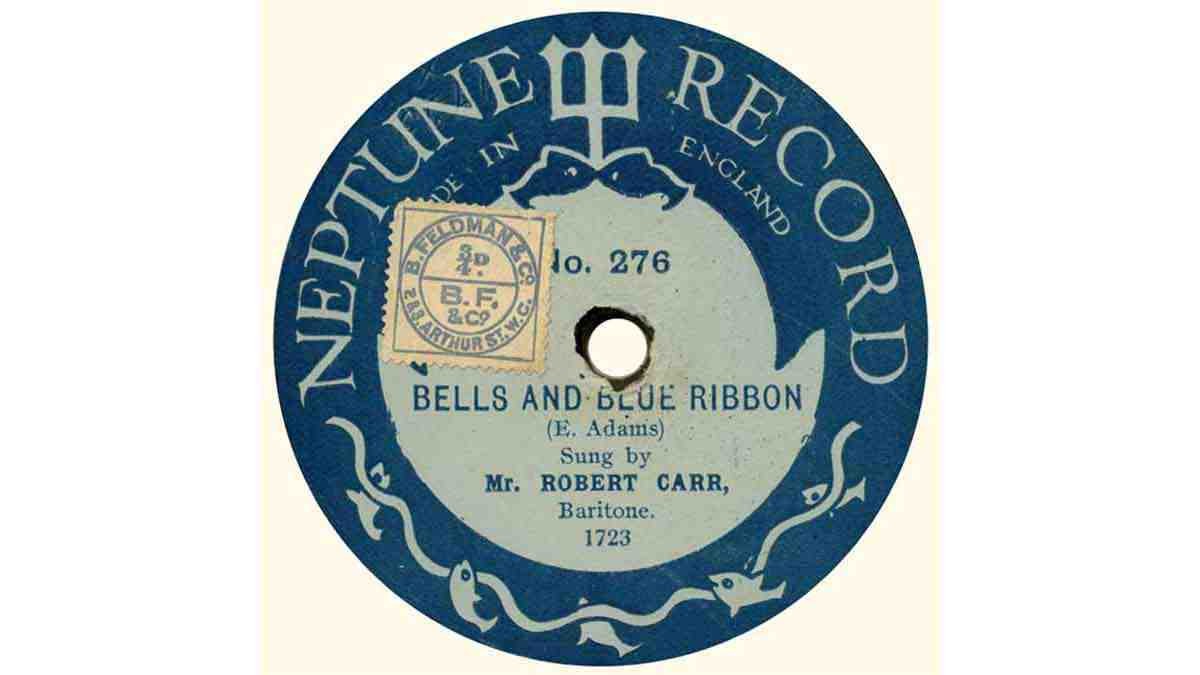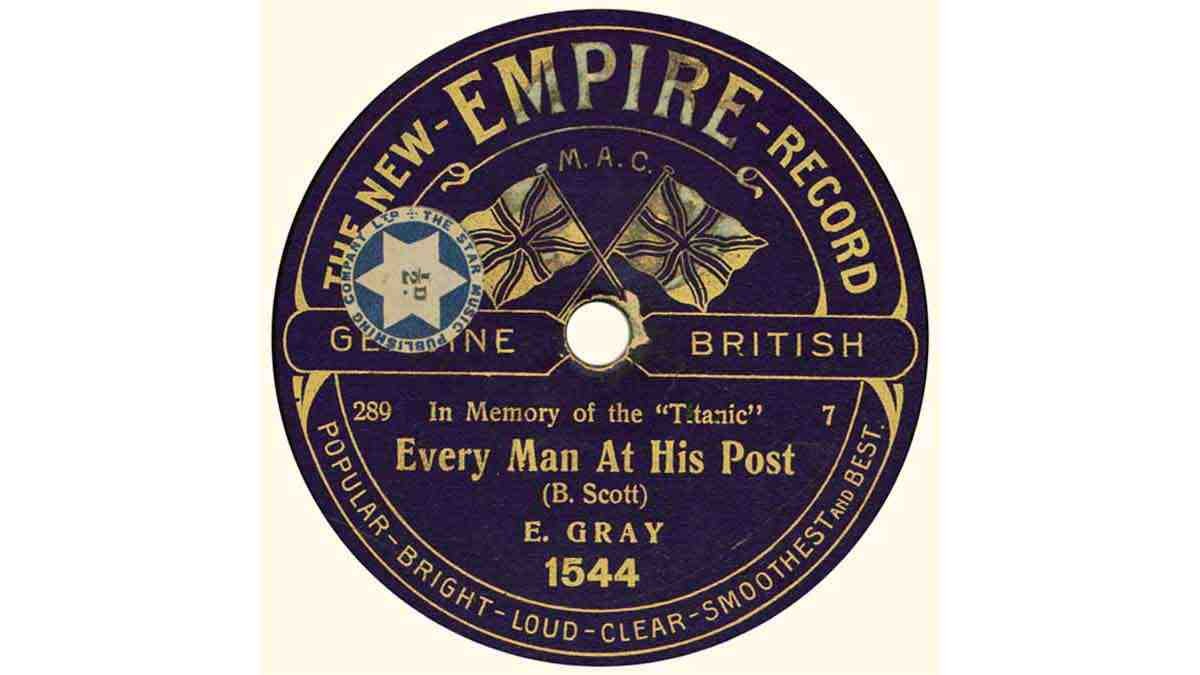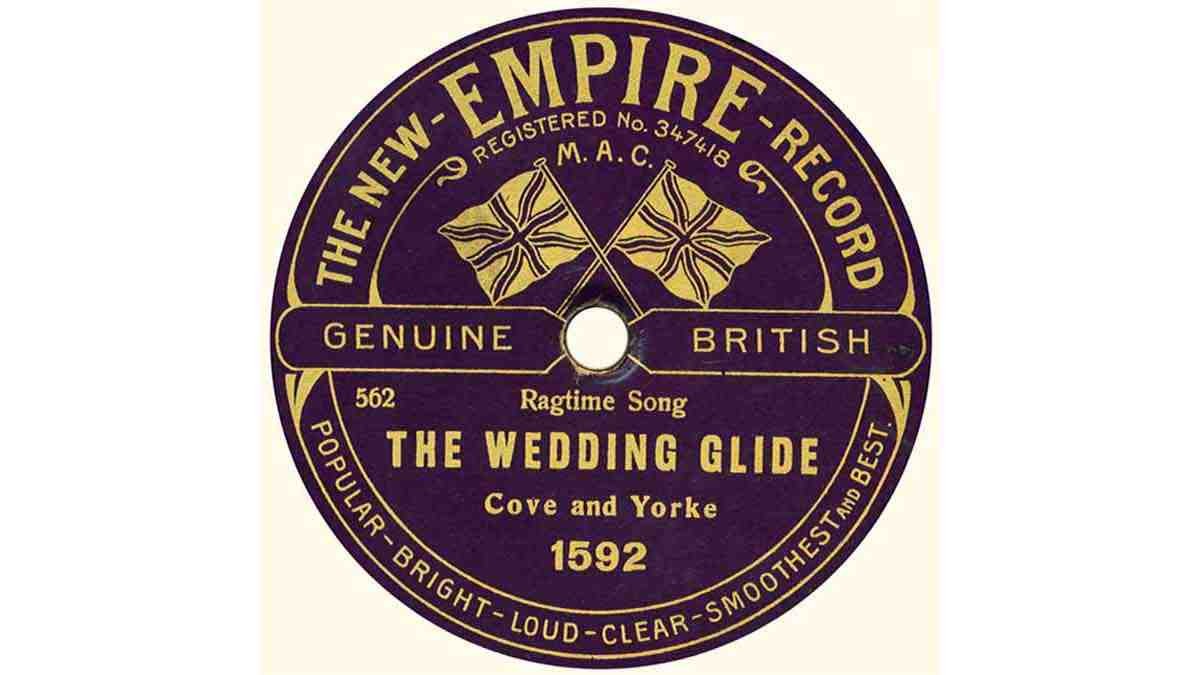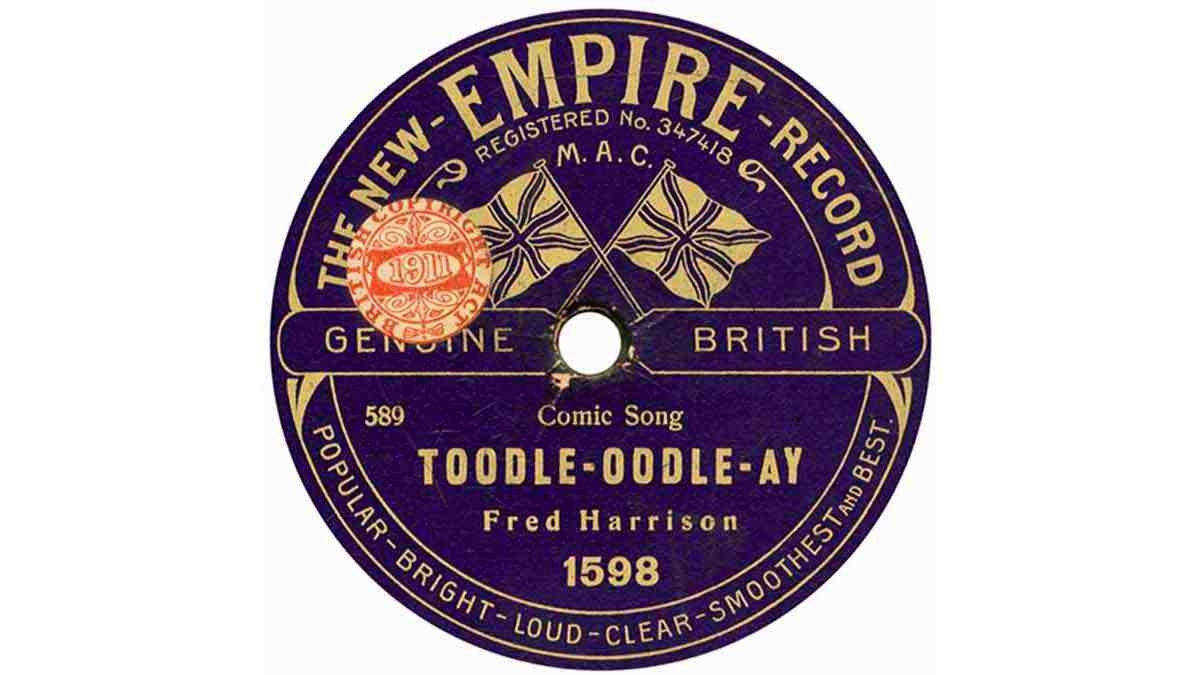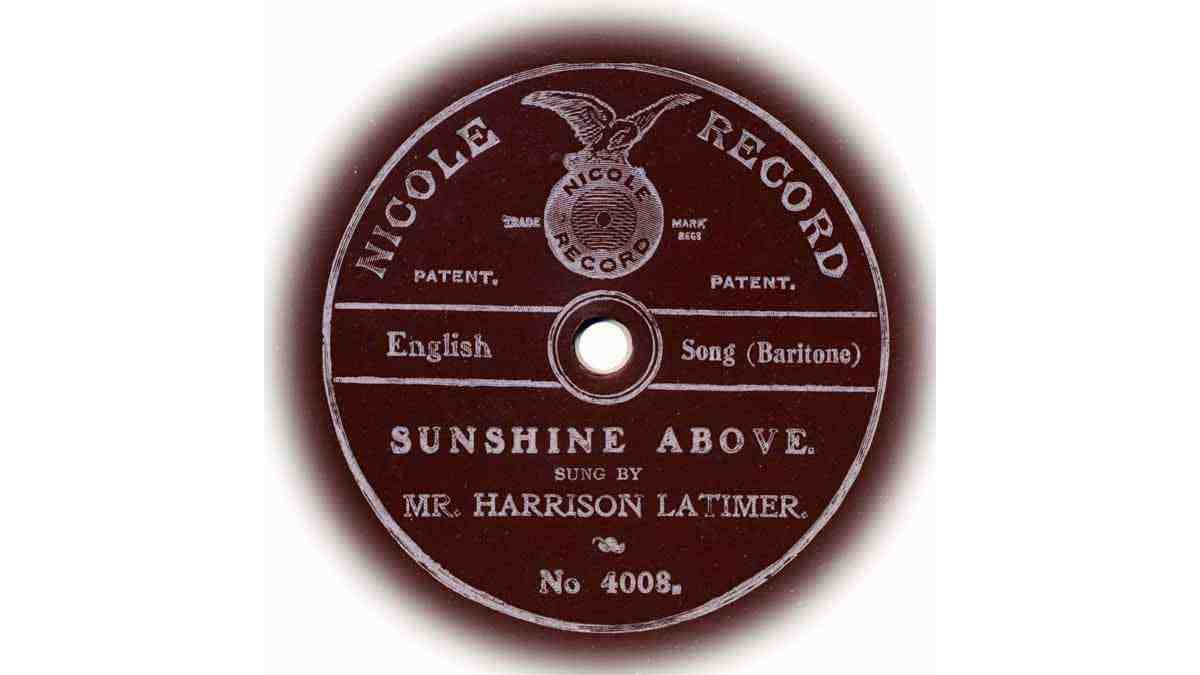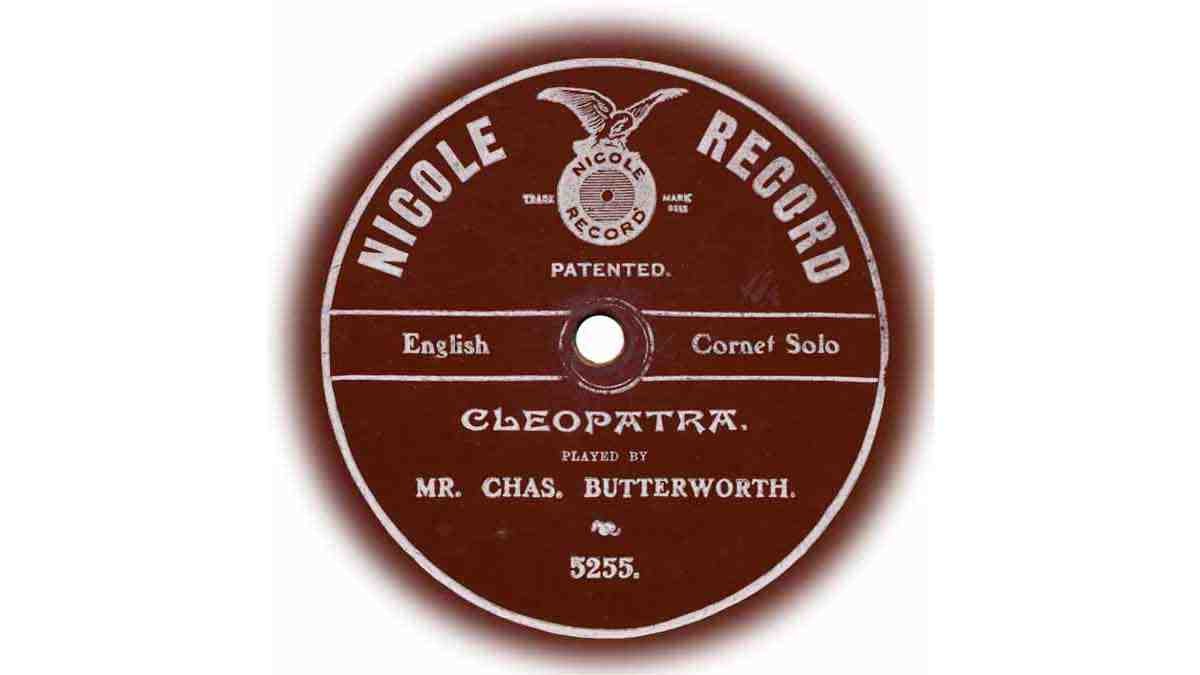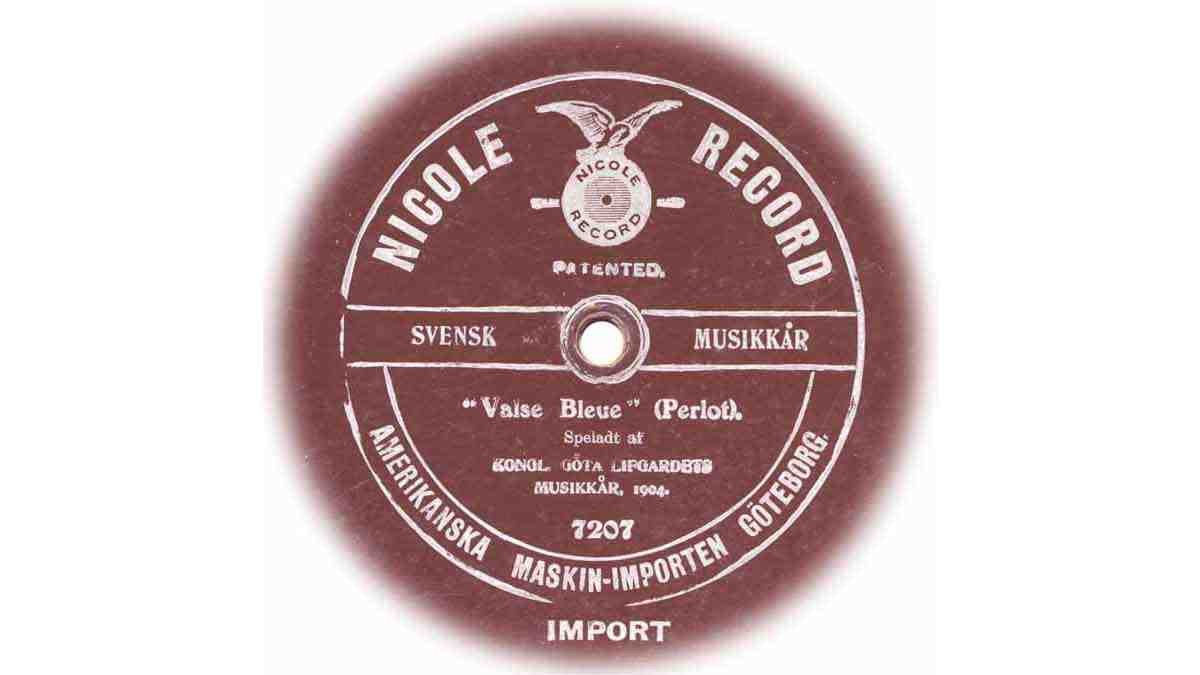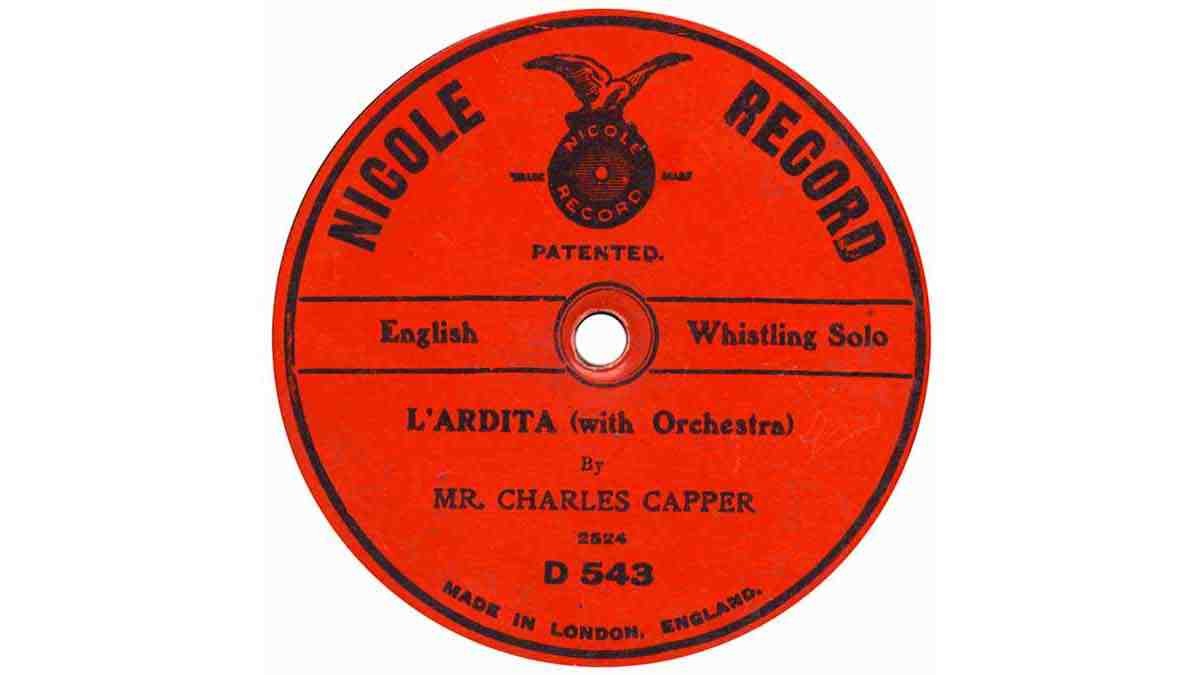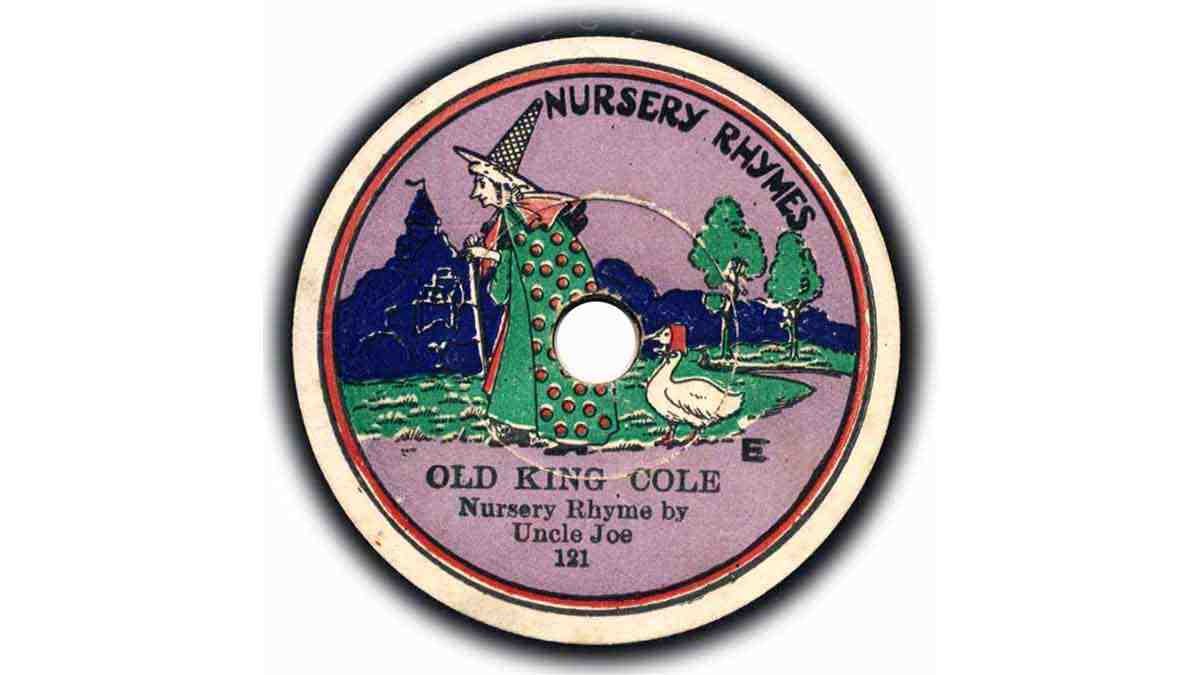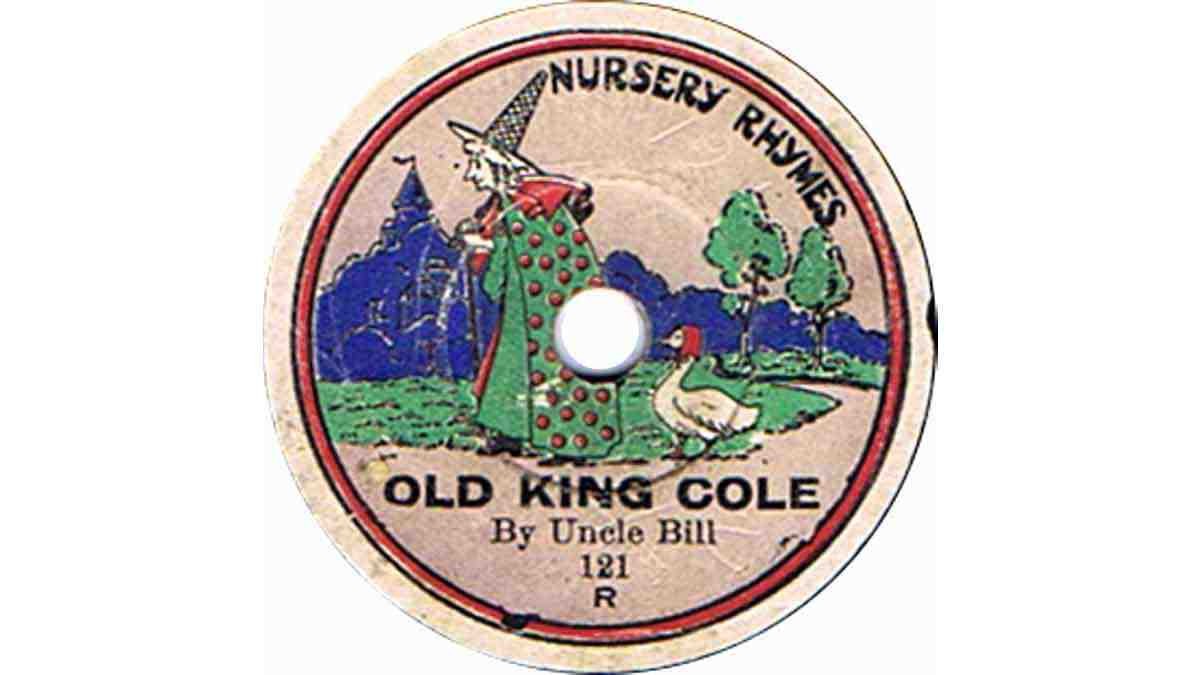
Early British record labels 1898-1926: N
Nassau
See Frank Andrews, FTR 25, TMR 70 (1985). A U.S. label, cloned from Leeds & Catlin’s Imperial masters, principally for sale in Macy’s huge New York emporium. Nassau records existed from about 1904 to 1909, when Leeds & Catlin went bankrupt. They had, in any case, been repeatedly hounded by lawyers acting for the Victor/Columbia ‘patent pool’ which L&C had infringed. A final court order forbade further sales of discs, and even any subsequent use of the masters. Accordingly, quantities of both single and double-sided Nassau discs were bought up by an unknown jobber, and brought to the U.K., thus making them a British label within the terms of this web page. In addition, quantities of L&C masters were imported here; Frank tells us that these, or some of them, appeared on minor label. (As yet, we have not identified any of these.) Their brief life in the U.K. would be say 1909 – 1910. Nassau? It’s the capital of the Bahamas, a town in Germany, and the name of at least two counties in the USA – one of them in New York State. Perhaps the last-named is the crucial connection? Thanks to Guy Laboissonière of Vancouver for valuable information on this label.
National 1
See Frank Andrews: FTR25, 2008. Frank believes that this marque was a tallyman label (see glossary) belonging to a company named something like ‘United Kingdom Record Co.’ They may even have preceded the best-known tallyman label – John Bull – and begun in 1909-10. Edison Bell made them at first, in their characteristic Bell Disc size of 10.25″. National 357 is a clone of Bell Disc 14, which was issued in July 1908. Later, they were pressed in Germany by Beka, ‘Angels Guard Thee’ is master 40651, on Beka 248 as Henry Bryan, c. January 1910. All carry the correct artiste credit. However, this label is seldom to be found, so the company cannot have been very successful; whereas John Bull discs are still found from time to time, a century later!
National 2
See Frank Andrews: FTR25, 2008. This flag-design National Record was manufactured for an unknown client by ‘Edison Bell’. The label dates from ca. 1910. Pressings from Bell Disc are distinctive in that they are slightly larger than usual at 10.25″ diameter. Very scarce; so scarce, that we are driven to speculate that Edison Bell were perfectly prepared to make these client pressings in extremely small quantities. If EB were pressing say 100 copies of a Bell Disc for their own stock, it would be little trouble for them to ‘run on’ for another 10 copies, which would be given National labels instead of Bell Disc. It follows of course, that these clones would have the same coupling as the Bell Disc. We only have seen four of these Nationals, but all are indeed the same couplings as occur on Bell Disc. Ta-raah! Incidentally, the same label design was also used for one of the two types of Whytsdale record. Were they the clients for whom this National were made?
National 3
See Frank Andrews: FTR25, 2008. All ‘red label’ National Records seem to be by Billy Williams. They were pressed in Germany from Beka masters of late 1911 and were never advertised in the Trade press, so who owned the label is unknown. Frank Andrews suggests that they might even have been made for distribution by Williams himself, who had a music publishing business. Most of them simply bear a letter rather than a catalogue number: a/b, c/d &c. They are often found with a small green sticker which says ‘Scala Special Issue’, bearing what is presumably a genuine Scala catalogue number. In some cases that number even appears printed at the foot of the label, as shown above right. This disc shows no sign of ever having had a Scala sticker. It also bears the letter ‘g’ as a suffix to the Scala catalogue number. Frank tells us that there are also red label National discs identified with upper case letters, and these do not agree with the lower-case versions, having different couplings!
National Gramophonic Society
See Frank Andrews, FTR 25, 2008. Frank has a long and informative article here. To sum up, the new magazine ‘The Gramophone’ – which of course still exists – suggested in September 1923 that a subscription society be formed, to make complete recordings of chamber music repertoire hitherto neglected by the major companies. The first (multi-disc) sets, recorded and manufactured by Columbia, appeared in late 1924. Others followed, recorded variously by ‘Vocalion’ and Columbia. The last issues seem to have appeared in late 1931; in all, 165 discs were issued. Some of them remained available for a long period, even into the late 1940s. At first, the discs did not have catalogue numbers, but letters to identify them. Later, numbers were used in the normal way. Strictly speaking, only the first, mechanically recorded sets qualify for appearance in these pages. But at the moment, we have an image of a later, electrically-recorded disc. As far as I know, the label design remained pretty constant. The vast majority of the discs were 12″ (30cm), but a few 10″ (25cm) appeared too.

Neophone
See Frank Andrews: TMR 51, 52-53, 54-55, 56-57. 1978-9. Again, a masterpiece of investigative work by Frank, who covers the short-lived but fascinating Neophone Company in astonishing detail, including an extensive listing. The articles are copiously illustrated with scarce images of Neophone machines, accessories &c. from rare catalogues. Only around in 1905-1907, Neophone is a label of near-mythical rarity, in spite of the many hundreds of discs they offered. To make matters still worse, they produced single and double-sided records in 7.5″ (19cm), 9″ (~ 23 cm), 10.5″ (27cm), 12″ (30 cm) and 20″ (50 cm) diameters, though not in every combination thereof. The playing surface was at first a layer of white enamel laminated to rather thick & stiff cardboard. These were single sided. Later, double sided pressings were made for Neophone in conventional black material by the Grunbaum concern in Berlin. It is dangerous to assume anything in connection with this idiosyncratic label. All were vertical cut. If a group of Neophones turn up (and I know of two such lots, albeit 40 years apart), there are hardly ever two quite the same. Several different label colours were used. In many cases, there is no titling on the label: instead the title & artiste appears elegantly written ‘in the wax’, as in the first example above. Hand-written labels also occur, as shown. Neophone is the only company, to my knowledge, that ever produced a disc on which the label is simply a label saying ‘Neophone’ &c., the titling being meticulously inscribed in the wax. It is without doubt the most elusive and fascinating of early British disc record labels. Some (all?) single sided Neophones carry a large version of the label design on the back, as illustrated. The company failed in early 1907, and the business was acquired by James White. An American, he was the maker of the ‘White’ brand gold-moulded cylinder records, and kept the name Neophone, producing the discs by the same gold-moulded process. Just a single batch of 13 discs under his aegis was issued in October 1907. These are impossibly rare, and we are again greatly indebted to Mark Berresford for contributing scans of both sides of a ‘White System’ Neophone – of which, quite possibly, only a handful still exist.
Neptune
See Frank Andrews: FTR25, 2008. A scarce label which existed from late 1917 to late 1919. They were pressed by Crystalate for the music publisher Curwen. Only Guardsman masters seem to have been used; so Neptune might possibly be regarded as a ‘client label’ of Guardsman, rather like Citizen. Frank tells us that Neptune 266 was issued about March 1919. In contrast to the 1913-14 Price War period, all records had become much dearer during the Great War.Neptunes started out at 2 shillings each (10p) but rose to 2s 6d (12.5p) in October 1918. Had they survived after late 1919, they would probably have followed other labels and become dearer still.
New Empire
See Frank Andrews: FTR 26, 2008. These were manufactured by ‘Edison Bell’, using masters from its ‘Winner’ Record. M.A.C. under the word EMPIRE stands for The Manufacturers Accessories Co. Ltd. The first discs appeared before the trade mark (M.A.C & crossed flags) had been registered, e.g. 1544 & 1560 above. Later, ‘Registered No. 347418’ was added, e.g. 1592 & 1598. They probably appeared in early-ish 1913, and ran to March 1915. Around that time, Edison Bell ceased producing client labels, because they needed all their capacity for pressing their ever-more successful Winners. Therefore that would have spelt the end of the New Empire Record. There were three catalogue series: 1000 for bands, 1300 for instrumentals and 1500 for vocals. So far, we only have examples of the 1500 series. Notice the round, punched copyright stamps. These are a reliable diagnostic feature for an Edison Bell client label. No other company did this – and nobody apparently knows why Edison Bell did so.
New Leader
See Frank Andrews, FTR 26, 2008, pp96-7. The successor to Lansbury’s Labour Weekly records, (q.v.). Lansbury’s Labour Weekly (a newspaper or magazine) was absorbed into the Labour Party newspaper The New Leader. Three more records were announced soon after this (July 1927) and so bore the new name. As before, they were recorded by British Homophone (by the old mechanical process) and pressed by Pathé with white labels. The New Leader labels were stuck on later. This, because other companies who did contract pressings would not deal with a political party, the policies of which they feared. The discs were still available as late as September 1928.
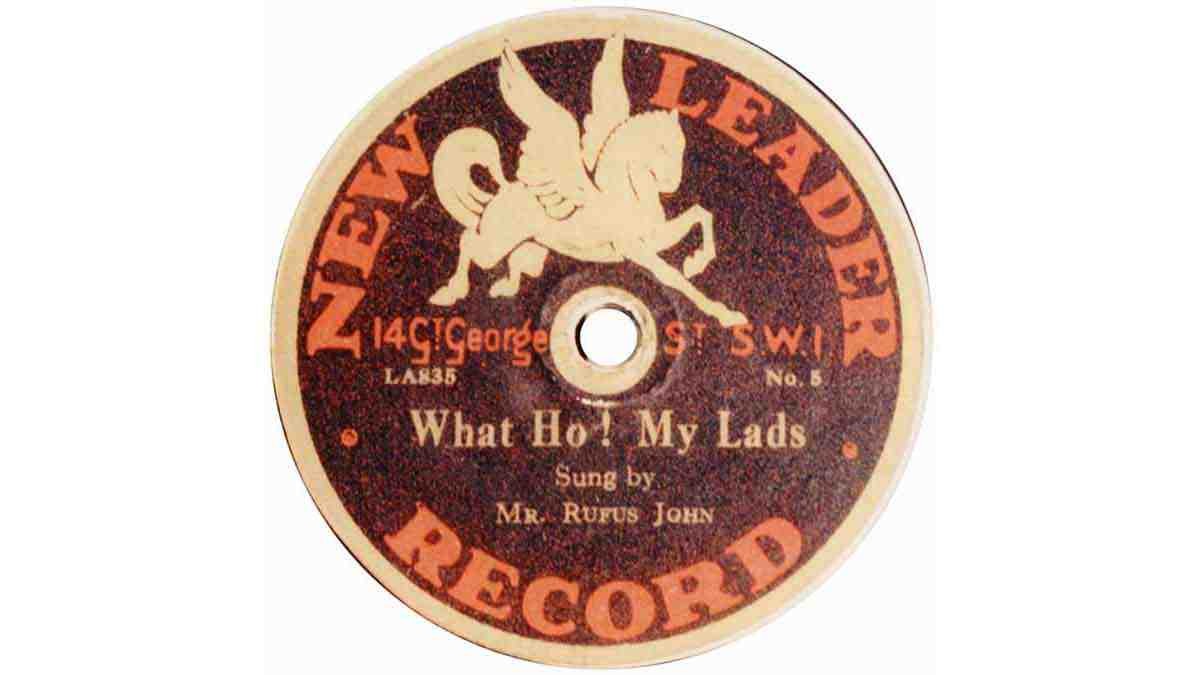
Nicole
A most impressive listing of Nicole records was published in 2001 by the distinguished Australian discographer Michael Kinnear, after several decades of meticulous research, and with the cooperation of Frank Andrews. It is worth searching eBay, and the Internet in general if you would like to acquire a copy of this fascinating book of 286 pages, which also lists connections with many other early & obscure British labels. ‘Nicole Record’: a Discography and history by Michael Kinnear. Pub. Michael Kinnear, Victoria, Australia, 2001.
See also Frank Andrews, BRI. A very important but now largely forgotten early British make. They were only the fourth label to appear on the British disc market, and were also the first disc records to be manufactured throughout in the U.K. – Gramophone, Zonophone and Columbia discs (the three earliest labels) were pressed in Germany or the U.S.A. The Swiss company Nicole Frères had long been famous makers of musical boxes; and like a number of other concerns, felt threatened by the advent of recorded sound, besides other factors; so they diversified. This they did very early: in BRI Frank Andrews tells us that they were handling a type of lateral disc sound box as early as 1901. Besides, they were already stockists of Edison phonographs and Edison (cylinder) records, and even the products of The Gramophone Company. Slightly later, they were agents for Zonophone records and machines. Their own single-sided discs appeared in 1903. At first they were pressed in brown celluloid – these are thin. However, celluloid was expensive and soon very thin celluloid laminated onto a so-called cardboard core so dense that it might almost be wood. The ‘label’ was printed in silver ink directly onto the disc. They were unbreakable ‘in normal use’ – but alas, the pressings are rather ‘fibrous’ in nature and usually have high surface noise. Though, for all we know, the passage of over a century may have made it worse that it originally was. Early Nicoles carry detailed spoken announcements. This gradually get shorter, ending up with just ‘Nicole record’. Some artistes spoke ‘Nicole Record’ themselves, as evidenced by the fact that some records by female artistes are prefaced by a woman’s voice. Eventually the announcement was dropped altogether. They made both 7″ (18cm) and 10″ (25 cm) records, and supported a wide catalogue; French, German, British, and Swedish material is to be found in the British catalogue. Possibly the converse was also the case? They also recorded extensively in Calcutta for the Indian market. Quixotically, they later went into manufacturing cylinder records: an improbable inversion of the usual procedure! The company failed in 1906, even their double-sided red-labeled discs not sufficing to save them. Indeed, these are scarcer than the ‘normal’ brown single-sided ones. Their masters were acquired by others, and duly appeared on Sovereign and Empire (one of several labels of that name) and the products of yet other and mostly very obscure outlets, such as Whytsdale and Conqueror-Regent. The Indian branch, a separate concern, survived as such until 1909. Incidentally, Swedish Nicole 7207 is a very rare example of a disc bearing a date – 1904 – as part of the general titling. Also, the French Nicoles are alone, it would seem, in having a run-off groove. In spite of the respectable size of the catalogue, Nicoles are scarce. On no account should they be exposed to water: if any got in round the edge, the wood-like core would probably expand, and heaven knows what the consequences would be…
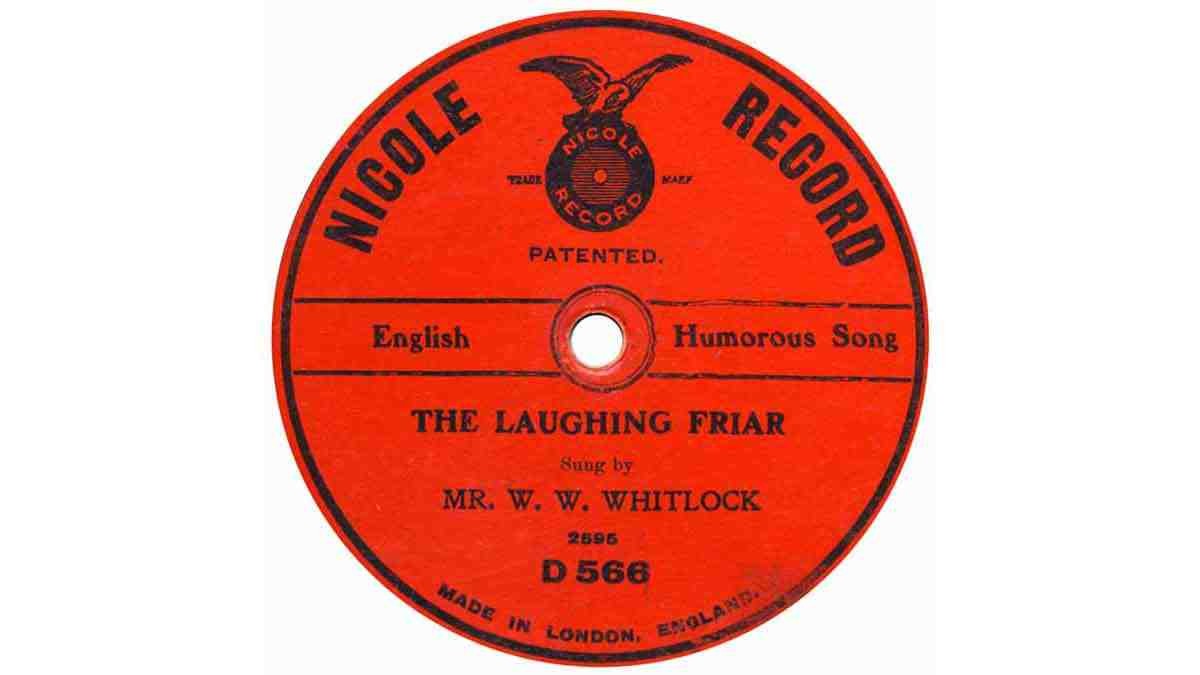
Nursey Rhymes
See Frank Andrews, FTR 26, 2008, p99. A Crystalate product, 6″ (15.25cm) diameter. The recordings were made between June & August 1927, and are acoustic, so fall within our remit – Crystalate were late-comers to electrical recording. Frank tells us that the late Arthur Badrock identified ‘Uncle Joe’ as George Berry. The discs had letters instead of catalogue numbers. It is not known how many issues were made; probably not very many. Adam Miller of New Zealand recently sent another ‘Old King Cole’, bearing ‘R’ instead of ‘E’. The master number is the same; so it poses the question “What happened to Uncle Joe?” 8^).
